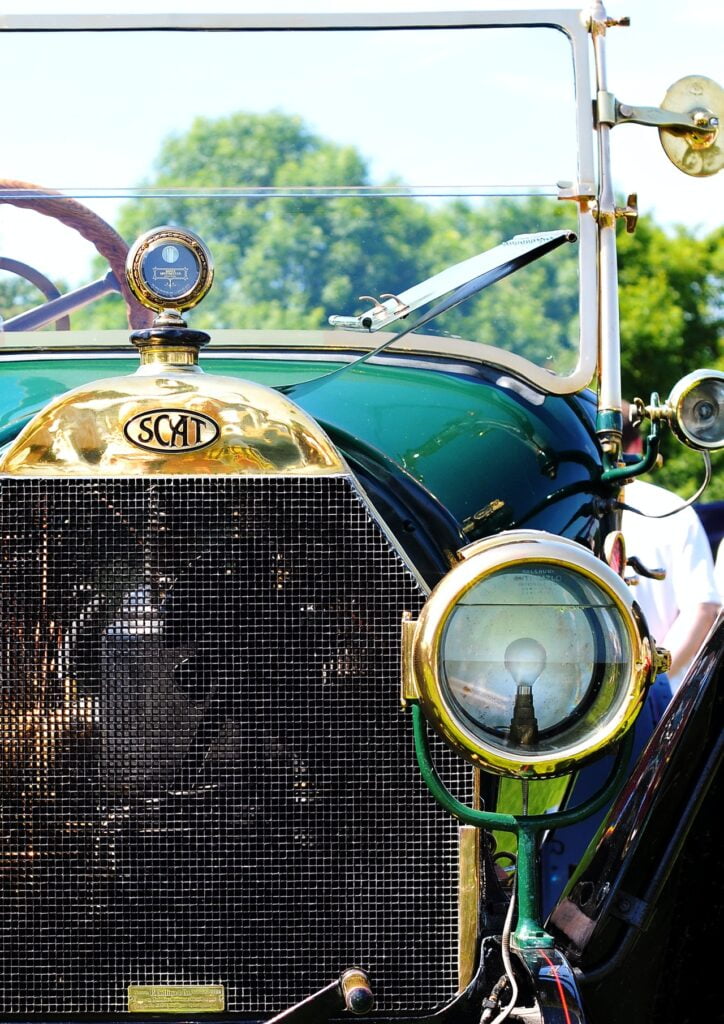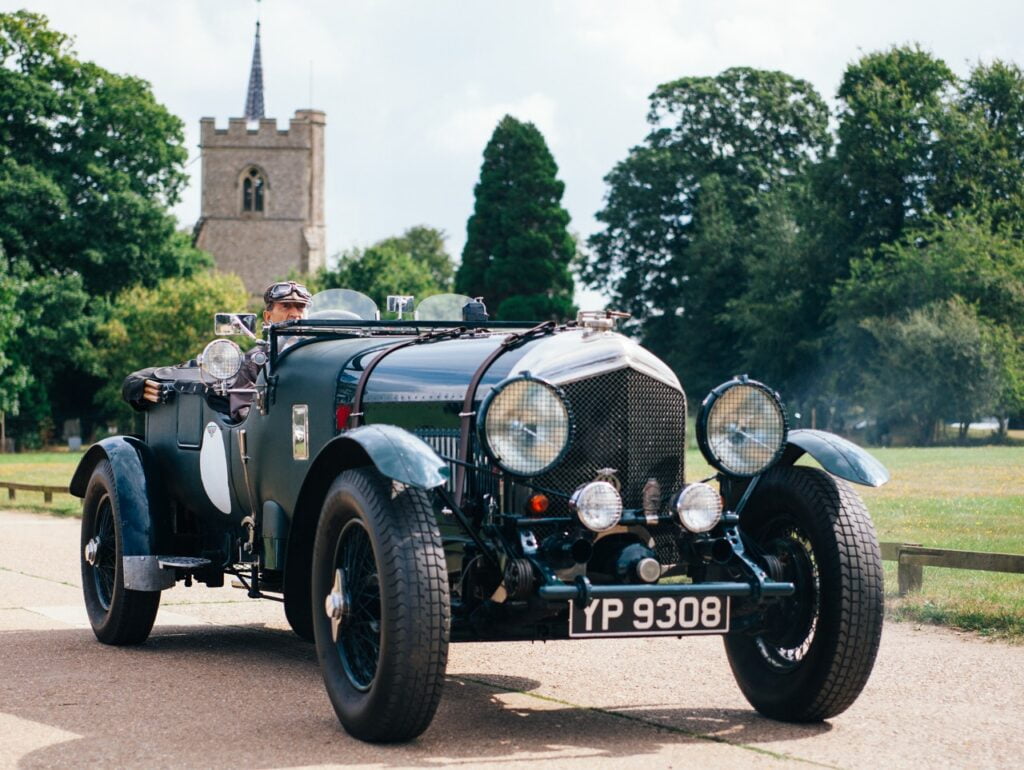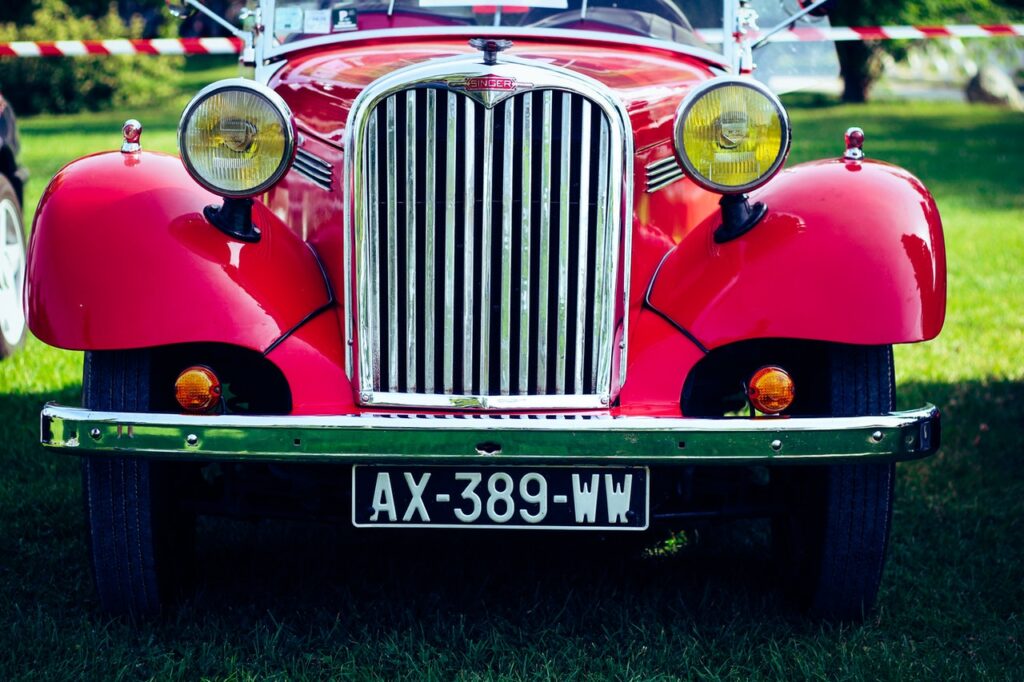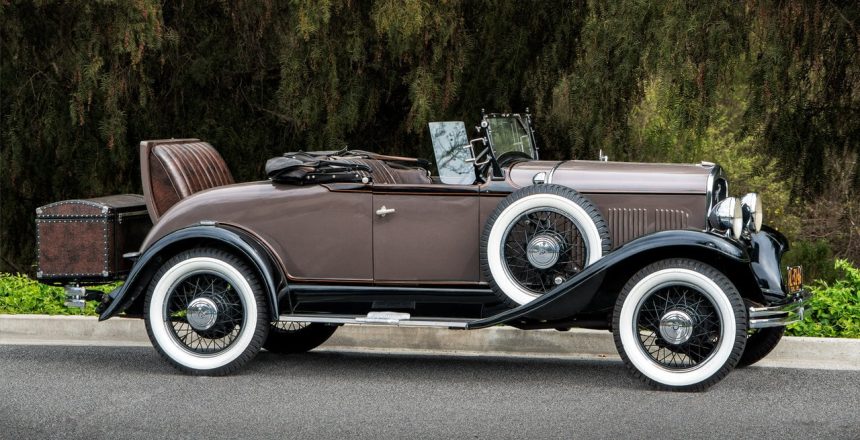If you love vintage cars and have a few in your stable already, you might have realized that you can actually keep these cars as collectible items rather than using them as cars that you actually drive around town. The process of creating a vintage car collection can be a labor of love. Likewise, many people who embark on this journey find that the process of collecting cars is very rewarding.
If you have been considering building up a vintage or classic car collection to display and have people come to visit, you might be wondering about the best way to start your collection and how to house it. There are many ways to accomplish your vintage car collection goals. Also, you do not have to create your collection just to show it to other people.
If you are ready to learn about creating a vintage car collection, read on!
What is a Vintage Car?
In a general sense, a vintage car is an old car. This can mean many things to many people. However, the textbook definition per the auto industry is any car that hails from 1919 to 1930. The vintage moniker is often extended into other years and date ranges for enthusiasts. This is because most car lovers enjoy many cars from many eras, not just this small window of time.
A vintage car collection can include newer or rare models as well as older cars, but be aware that if you are building a collection for people to come and view, they will expect early automobiles to be in the collection. The line between classic cars and vintage cars happens in the 1930s. However, you can include both kinds of vehicles in your collection if you so desire.
Creating a Vintage Car Collection
1. Decide Where You Will House Your New Classic Car Collection
This can be the biggest factor that will determine how large your collection of cars can be. Many people who have vintage car collections store them at a warehouse/facility for storing and displaying cars. This can add quite a bit of cost to your collection. However, it’s worth it if you like keeping your vintage cars locked away and in ready-to-show condition always
Some people opt to have another garage built on their property or they build their own display garage for their collection right on their property. Vintage cars need to be kept warm and dry to survive the test of time. Therefore, you’ll need to be sure that you’re not planning to keep your vintage car collection in your regular garage.
2. Consider Having a Theme
Not everyone does this. Therefore, having a theme for your collection can be very useful if you want to show it to other people. Even if your theme is related to cars that were not made in large quantities, having a theme to explain to your visitors is very helpful.
Many collectors treat these cars like art and collect them based on make or model, year of manufacture, or maybe engine style. There are many ways to focus your collection, but it can be helpful to stay within some parameters so that your collection does not wind up being huge and disjointed.

3. Join Vintage Car Collector’s Clubs
Joining these social outlets can help you to track down rare cars that might not actively be for sale. This can also help you network with other car collectors to promote your collection. These people will often have lots of experience in the collecting world and be able to offer guidance about the right way to negotiate for these purchases as well as the best means to store and care for your collection of cars.
You might even be able to share a rental space with someone in one of these clubs. However, this is if you make friends with the people in your social group. These kinds of partnerships can help keep the cost of the space. It can also help to keep the insurance that covers and protects it much more affordable. This is useful if you plan to show your collection to visitors and have a very large collection.
Collector’s clubs can also be a great way to make connections for important needs related to the maintenance of your collection. It is also a great way to track down historical memorabilia to pair up with your collection of cars.
4. Plan Auto Transport Carefully
Vintage cars are very fragile and they often will not fit in fully enclosed car trailers like modern cars. You need to have special arrangements involved in the process of having these cars delivered to your home. Also, you need to work with an auto transport company who knows how to handle this kind of job.
Some vintage cars have to have their wheels removed or their tires aired down to fit onto a trailer. Likewise, there’re considerations related to preserving the paint while the car is taken down the freeway and exposed to sunlight. You should discuss all of these details with your auto transport company and make sure your needs can be met.
Don’t assume a car transport company is qualified for this task just because their quote is higher than others. You should be sure that you are working with an auto transport company that works specifically on classic car transport. This is so that you can get the right kind of transport care for your vintage cars.
A good auto transport company will always be willing to write any stipulations for care into the contract you sign. In addition, they will give you their insurance information as well as their routing info. They will also tell you exactly where they are willing to deliver your car to. Likewise, they will quote you a price that includes all of the charges upfront.
5. Figure Out What is Popular When Mapping Out Your Classic Car Collection
If you are planning to display your collection to the public, you should look into what is popular. You want to be sure to have at least some cars that are automatic draws for people wanting to look at vintage cars. If you have unique tastes, you can populate the rest of your collection with these other vehicles, but you should try and have some of the most common and popular cars in your collection.
If you are collecting just for yourself, popular cars can be hard to come by, but they are often in better condition than rare barn finds that are just sitting under a cover in someone’s outbuildings or shed. You will usually have less money invested in a more popular vintage car because the upkeep has been done for the car from the beginning. Rare makes and models often need extensive work to bring them up to their original condition.
6. Consider Collecting Memorabilia as Well
One of the most fun things about collecting cars is all of the associated signage, advertising gear, and other memorabilia that came with each new car that was produced and advertised. This is particularly true for cars that were used as early race cars and things like magazine and newspaper articles about the car in your collection as well as information about the era that the car was made for can make a big difference to your collection.
Memorabilia is often very valuable. Also, it can tell the story of your car in a way that the car itself cannot. Car enthusiasts are often also history buffs. Therefore, if you plan to show your collection to the public, you’ll have to show other car items as well. These connections to the human experience related to these cars can make the experience of seeing these vintage cars that much more poignant.

7. Determine How Much You Want to Invest in Repairs Before You Begin to Collect Classic Cars
The problem with collections of vintage cars is that these cars can be very expensive to maintain and to repair and refurbish. Many of these cars are approaching one hundred years old at this point. In addition, they need lots of love and care to continue to be preserved in fully working condition.
If you elect to store your collection in showroom condition but not driving condition, you might save some money. Nevertheless, this is rarely acceptable to car collectors. This means that rare engine parts and rare interior parts will need to be located.
You will also need to consider that many of the mechanical parts of these cars are not commonly included in any modern working engines. Therefore, you should track down a specialist to work on these cars so you can keep them in working condition.
These considerations should be thought about in advance before you build up your collection and find that you cannot afford to maintain your vintage cars in a manner that makes you happy with your collection.
8. Plan to Operate The Cars Frequently
The other factor that is involved in keeping a collection that drives and functions, is that you will actually have to make time to drive all the cars in your collection. Cars never benefit from sitting around all the time, no matter how old they are. This means that your vintage collection will need to be driven at least once a week.
This might be no problem if you have a small collection. Nevertheless, it can become burdensome if you have a very large collection. The other limitation for these cars is that they need to be driven in ideal weather conditions. Therefore, you may have trouble keeping your collection running if you live where it rains or snows a lot.
Driving your collection can be very fun, but you will need to plan for some end-of-winter upkeep in many places in the US due to storage processes over the winter and a lack of acceptable driving conditions for much of the year.
9. Choose a Classic Car Collection Budget Before Shopping
It is a common problem for classic and vintage car enthusiasts to find that the cost of buying up these cars can be quite steep. You might have planned to spend one amount for a car only to find that you are trapped in a bidding war that leads to the car doubling in price.
This can be an issue with auction-purchased vehicles as well. The benefit to these purchases is that your paperwork and all the certificates of authenticity will be handled by the auction house. Nevertheless, you cannot be sure how much you will have to pay t o secure a specific car.
Many people start a vintage car collection and then find out that they do not have the cash flow to buy up the cars they have always dreamed of owning. Make sure to research the common sales prices of pristine cars. Also, make sure you determine if you can save more money by buying old ones and fix them up.
Having a set budget for your collection can help you to manage your spending and continue to enjoy your collection for years to come rather than getting burned out and having to sell it right off.

10. Put the Word Out
When you are looking for a specific vintage car, you will probably find that this car is not for sale. Many car enthusiasts who love classics or vintage cars know where these vehicles are stored or who currently owns one. Thus, if you put word out there about wanting a particular car, you’ll find someone to sell it to you.
This kind of buying experience is always superior to competing with others to buy a specific car at auction or trying to get there first when a car is for sale publicly or listed for sale online. You will be able to work out a deal with the owner directly. Thereby, making it much more likely that you will be able to track down and own the car.
Car people are all connected by a network of other car enthusiasts. Therefore, you can often find specific makes and models of vehicles simply through word of mouth. Many famous collectors like Jay Leno have gotten most of their vehicles through word-of-mouth process.
11. Make Sure You Know Where the Car Has Been
For any vintage car, you will need detailed records of everything that has been done to maintain the car, about which parts are original, and about all of the owners of the car if at all possible. While this may not be easy to find, the more information that you have about a car, the more likely you are to be able to speak to its history and determine the value of the car.
The more original a car is, the more valuable it is. This is where having an appraiser or a vintage car expert on your side can make a big difference. It is important to have the car evaluated for its condition. Also, It is important to be sure that most of the cars going into a collection are original. This person can usually appraise the car as well. This can help you to negotiate the price that you are willing to pay for it.
Many sellers will overestimate the value of a vintage car due to their faith in the documentation that came with it, or their level of sentimentality related to the car. This is not the same as market value. Although, you’ll want to pay for the collector’s value of the car rather than the sentimental value of the vehicle.
Starting a Vintage Car Collection Can be Very Rewarding

Car collectors will tell you that their love for the vintage cars in their collection is not dimmed by years of maintenance and curating their collection. These cars hold a special place in the hearts of most car enthusiasts. Also, they’re a valuable reminder of how far the car industry has come in a relatively short amount of time.
If you love vintage cars and you want to get started on a collection that pays tribute to them, you should make sure that you have the finances to allow this to be a realistic goal. Keeping to a budget will help you to maintain and enjoy your car collection as well as keep it available to visitors and other enthusiasts.
Vintage cars are a lasting symbol of American ingenuity and passion for the open highway. If you are starting a collection of these pieces of important history, you will be starting down the road of a labor of love that will last for your entire lifetime.






